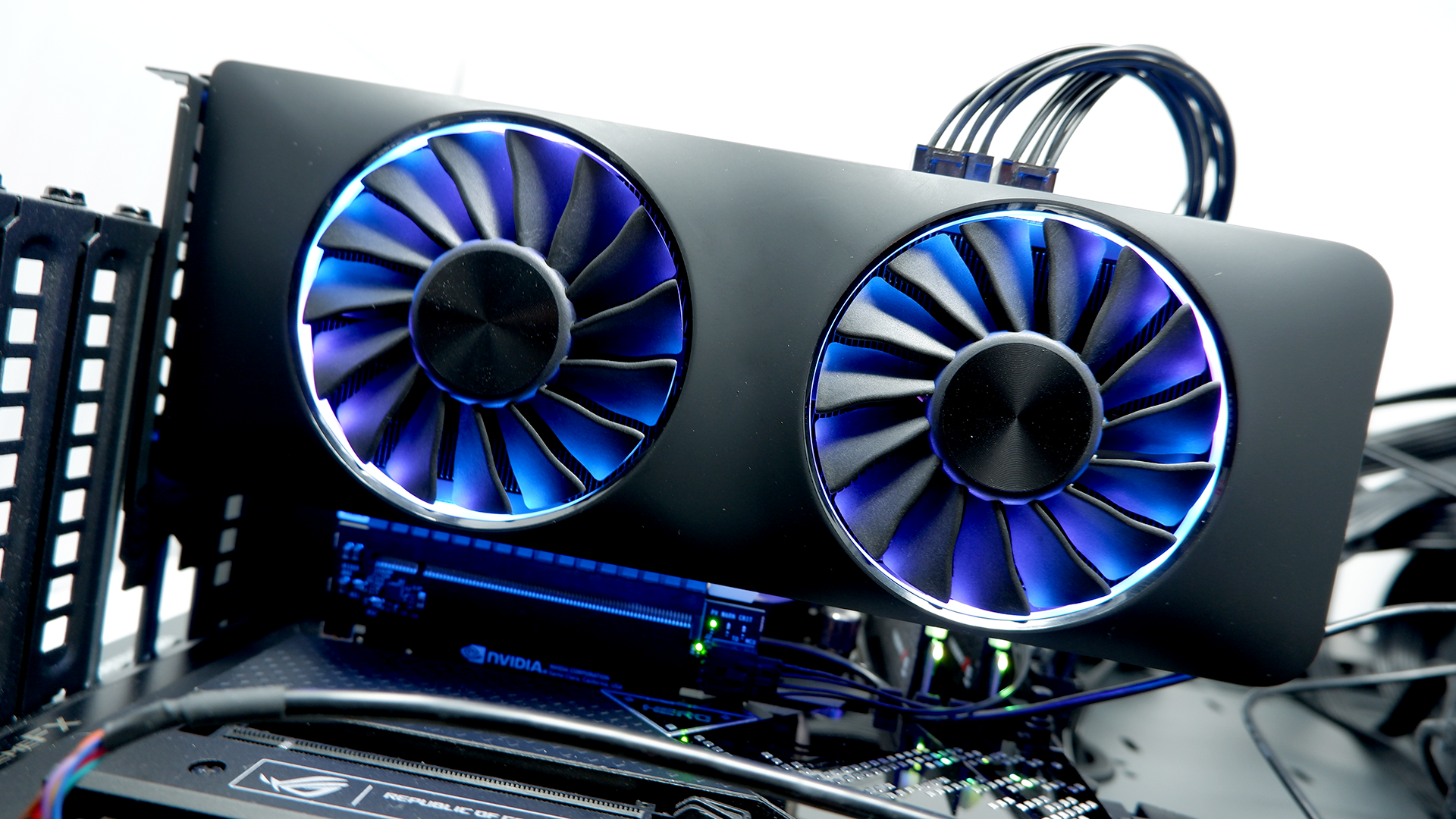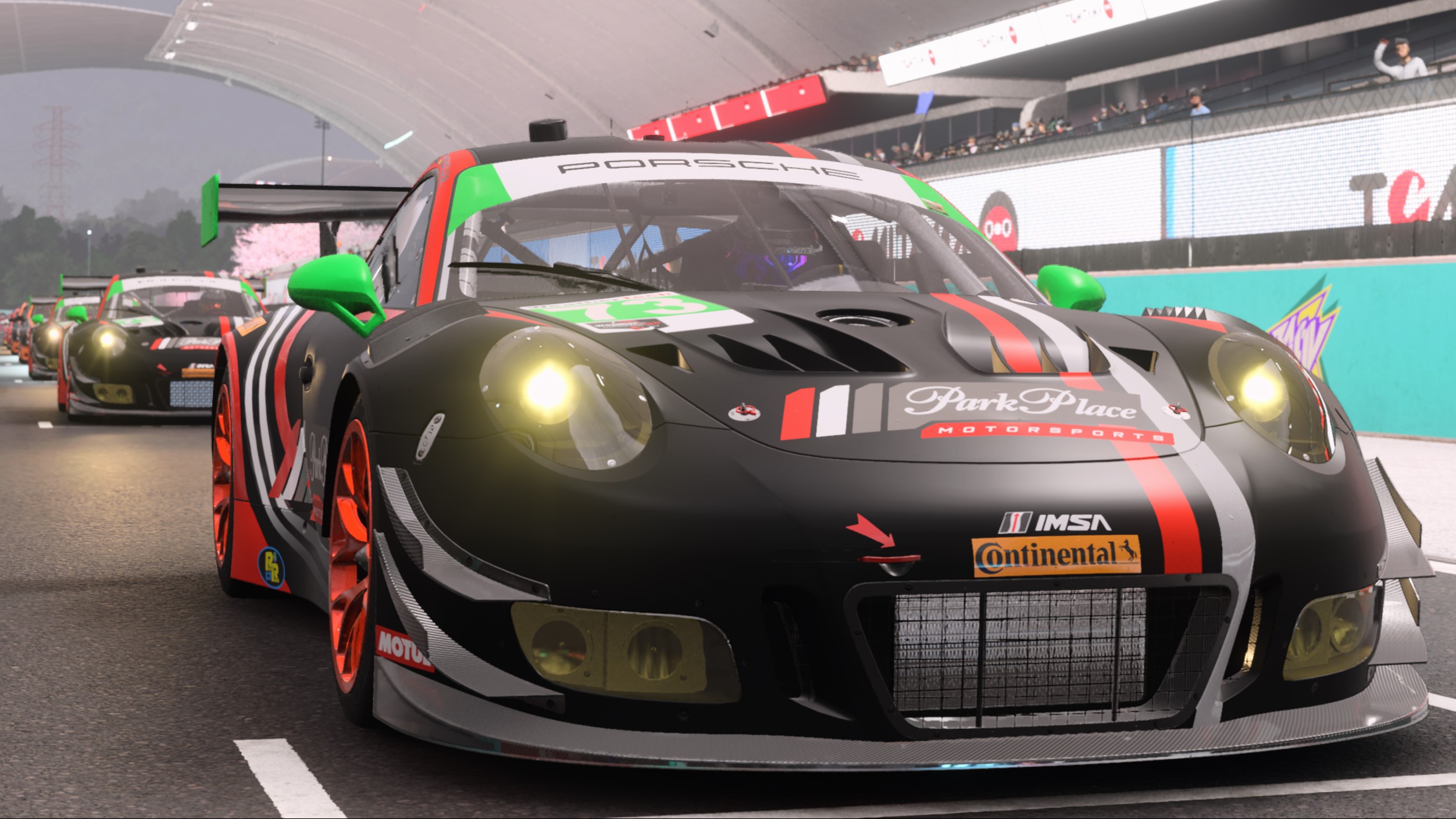The story arc of Intel's Arc graphics cards: What a difference a year makes in drivers
This is why it's good to be up to date.

We're used to updating our graphics card drivers, installing the latest Detonators or Catalysts, Omegas or Adrenalines, but it's not often that we get the chance to see a newly hatched graphics monster unfurl its wings and learn to fly. From the perspective of PC gaming's natural history, the launch of Intel's Arc Alchemist cards in 2022 was an evolutionary moment, the nascent GPUs peeping out of their chrysalis and using their launch drivers to make sense of the world.
Since then, we've been able to watch as the new cards have gone from strength to strength through driver updates. Having an all-Intel gaming PC, with no input from Nvidia or AMD, is now completely possible, and we wanted to test the improvements brought by the latest Intel Arc drivers.
To do this, we've assembled a mid-range PC with an Intel Arc A770 16GB graphics card in a PCIe 4.0 x16 slot, a 13th-gen Core i5 CPU that can boost to 4.6GHz, 16GB of RAM, Windows 11 and an awful lot of LEDs that light up the room.
Resizable BAR is turned on in the BIOS—something really important for the Arc cards, so much so that the driver installer app nags you to do it—and we've downloaded both the launch drivers from October 2022 (101.3940) and the latest ones at the time of writing, 101.4952.
We know that driver updates can squeeze extra frames out of a GPU in a particular game, with Intel's 101.4885 release in early October 2023 giving DirectX 11 and 12 games a lift at 1080p, so let's see if we can replicate that at 1440p, the sort of resolution we really want to be targeting in 2023.
A year in Arc driver updates

We'll start with 3DMark, a synthetic benchmark that should give us a really clear point of comparison, before getting on to the actual games. We're going to run Speed Way to test DirectX 12 Ultimate performance, and Fire Strike Extreme for DirectX 11. Both tests run at 1440p resolution, and the frame rate is an average.
And we're running exactly the same batch of tests, but using the early November 2023 driver release. This package also delivered a firmware update for the GPU, as well as updating the Intel Arc Control app.
Keep up to date with the most important stories and the best deals, as picked by the PC Gamer team.
You can see from that alone the Arc GPU is getting an 8%+ increase in performance. And it's worth noting that 3DMark performance was already at a very high level when the card first launched, so any improvement upon that is impressive.
The latest set of results shows the importance of updating your drivers.
Now onto the games. We've chosen a range of titles to see the effect of newer drivers on the Arc 770 in DirectX 11 and 12. We'll be benchmarking them all at 1440p and their highest graphical settings, switching ray tracing and Intel's excellent XeSS upscaling on and off where we can.
Interestingly, Company of Heroes 3 popped up an error message every time it started, complaining that it couldn't run because of an out of date driver... but then ran anyway.
The initial results aren't bad, especially considering we're using year-old launch drivers, and as usual we see ray tracing take a big bite out of frame rates, but it's been a while since the release of the A770, and things should have improved with a year of updates under the card's belt.
And they have, on the whole. The latest set of results shows the importance of updating your drivers, as well as how new software can improve your frame rates.
Take Cyberpunk 2077 2.0, which receives a 9.3% uplift from the newer drivers with ray-tracing switched on, taking it to a very respectable 45 fps at 1440p, and gains 13.8% with ray tracing disabled switched off, boosting it over the magic 60 fps mark. The synthetic benchmarks also acted in exactly the way we'd expect, with an 8% gain in frame rate, and Valorant managed to gain 20% more frames at 1440p.
There are some games that don't respond so well to the driver update, however, with Forspoken posting exactly the same frame rates for both its RT and non-RT incarnations no matter which drivers we used for the GPU, and Shadow of the Tomb Raider (released in 2018, long before the release of the Arc cards) barely budging—though the figures from that game do show the effect enabling XeSS upscaling can have on a 1440p monitor: an extra 22 fps between XeSS off and on is not to be sniffed at.

The latest driver package fixed this immediately for a whopping 50% improvement.
An interesting game to observe is Metro Exodus, which is coming up to its fifth birthday. It was an early showcase for ray tracing and upscaling, but it actually performs worse with the newer Intel drivers. We're not sure what has changed, but if you're determined to get the best out of this title it might be worth taking advantage of the fact Intel's driver installer software allows you to downgrade your drivers easily rather than insisting you use the latest.
Forza Horizon 5 gave us some inconsistent results with the launch drivers. The figure of 42 fps with XeSS and ray-tracing enabled is an average of three runs, which managed 33fps, 51fps and 54fps respectively, with GPU utilisation lower than the 95-99 percent we'd seen in other runs. This was actually slower than the result with RT on but XeSS off, which is not what we expected.
Updating to the latest driver package fixed this immediately, pumping out 70 fps with XeSS and RT on for a whopping 50% improvement.

Perhaps most interesting of all, however, was Forza Motorsport 2023. The game, which came out well after the launch drivers were published, refused to run on our test rig with the early version of the software—there was no error message, it just vanished after showing its first logo.
Setting it to 1440p ultra settings harvested 34fps from the demanding racing simulation using the up-to-date drivers, and its benchmark test contains a lot of cars and weather, so this is very good from the A770. The Xbox Series X puts out 30 fps in Quality mode at 1440p, so the Arc is already ahead by virtue of being at ultra settings, while the console is using a lower quality. You'll easily be able to increase that by turning on the clever optimisation tech within the game, which we'd turned off for the purposes of our tests, or by disabling ray-tracing.
These figures ably demonstrate the arc of Intel's Arc GPUs from their birth. And also show not only the work that Intel's engineers have put into enhancing and optimising the Arc drivers since launch, but also the effect that keeping them up to date can have on your own frame rates. It also gives us a lot more confidence about what sort of state next year's Battlemage graphics cards will arrive in now that we have more solid driver support for these Alchemist GPUs.

Ian Evenden has been doing this for far too long and should know better. The first issue of PC Gamer he read was probably issue 15, though it's a bit hazy, and there's nothing he doesn't know about tweaking interrupt requests for running Syndicate. He's worked for PC Format, Maximum PC, Edge, Creative Bloq, Gamesmaster, and anyone who'll have him. In his spare time he grows vegetables of prodigious size.

